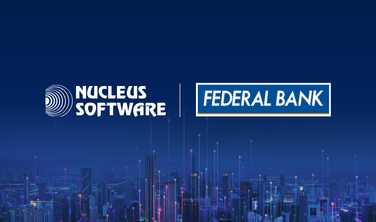An advanced technology platform, designed to deliver agile and efficient solutions while drastically reducing the cost of operations.

End-to-end digital lending across the entire lifecycle of origination, servicing & collections.
Learn more
Advanced Automotive Lending Software for complete loan life cycle management.
Learn moreDigital Transaction Banking suite that is modular for a composable banking experience.

FinnAxia®, End-to-end Global Transaction Banking Suite; optimally manages Receivables, Payments, Liquidity, Financial Supply Chains and Corporate Trade.
Learn moreFEATURED

Deepika Gulabani
Corporate Communications
Email: deepika.gulabani@nucleussoftware.com
Phone: +91-9310334963







